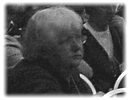Sessions: Abstracts

Photo Credits
Speakers from around the world present their latest work at MW2005.
| Workshops |
| Sessions |
| Speakers |
| Interactions |
| Demonstrations |
| Exhibits |
| Best of the Web |
| produced by
|
| Join our Mailing List Privacy Policy |
Deriving Meaning From Specimens: Making Zoological Data Available On The Web
Alan Brooks, KE Software, Canada
Basil Dewhurst, Collections Australia Network, Australia
Elycia Wallis, Museum Victoria, Australia
http://www.ozcam.gov.au
Session: Interface Design
In museums, natural sciences collections reflect past and present faunal and floral biodiversity and the geology of the earth. These collections are characterized by having many duplicate specimens of each species, with variation in collection locality and time. This is in contrast to cultural collections where few duplicates may be collected and the unique value of each object is emphasized. Museum collection management systems that document natural sciences collections are usually highly structured and have few fields that contain interpreted data (information). Each individual specimen record carries little special meaning. Again, this is in contrast to cultural collections where individual objects may be endowed with a great deal of meaning; may be extensively documented; and may even be accorded iconic status in an institution's collection.
The challenge in presenting natural sciences collections on the Web is to construct meaning from the individual, duplicate specimens. Whilst the precise data for a single specimen may not be interesting to an on-line user, a map showing information about a species may be. Users may be interested in how common the species is, what its geographical distribution is, and whether that distribution has changed over time.
In Australia, and across the world, there are a number of searchable Web sites of natural sciences collections. Common to all is the ability to derive new meanings from individual specimens. This is often achieved by combining specimen data points in a graphic way to provide information about the species. One such project, the Online Zoological Collections of Australian Museums (OZCAM), Australia's Fauna Web site, is a collaboration among all the major and several minor natural sciences collecting institutions in Australia to present museum collections on-line. Further collaborations are made with the Collections Australia Network, who provide technical support and who host the site, and with software providers KE Software, who have developed the portal and display software. The OZCAM, Australia's Fauna project, will be described and used as an illustration of how multi-institutional collaborations can provide greater access and meaning to natural sciences collections on the Web.
April 2005
analytic scripts updated:
October 2010
Telephone: +1 416 691 2516 | Fax: +1 416 352 6025 | E-mail:
